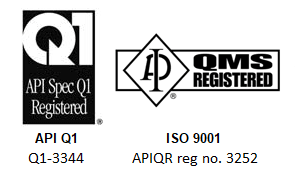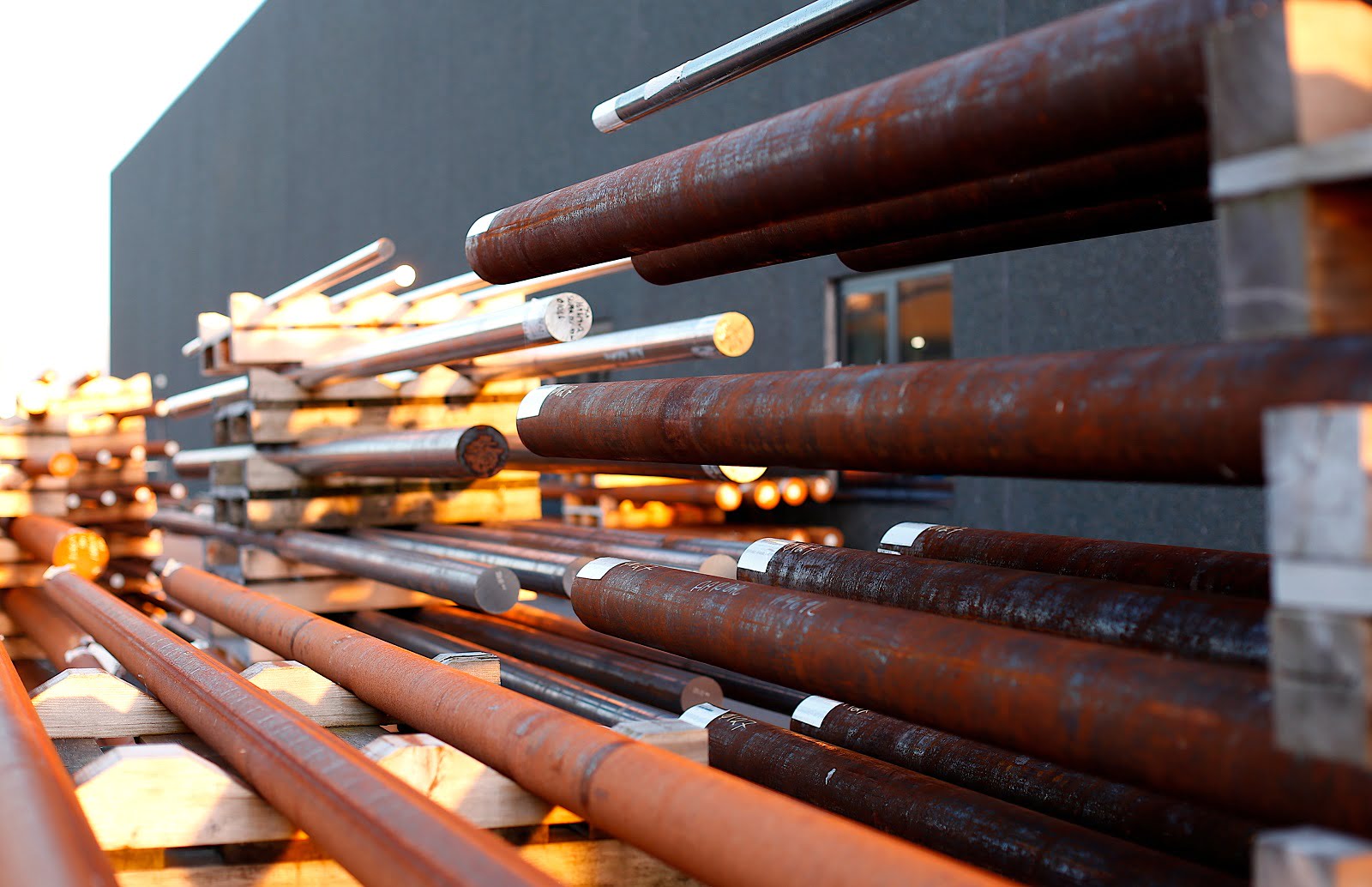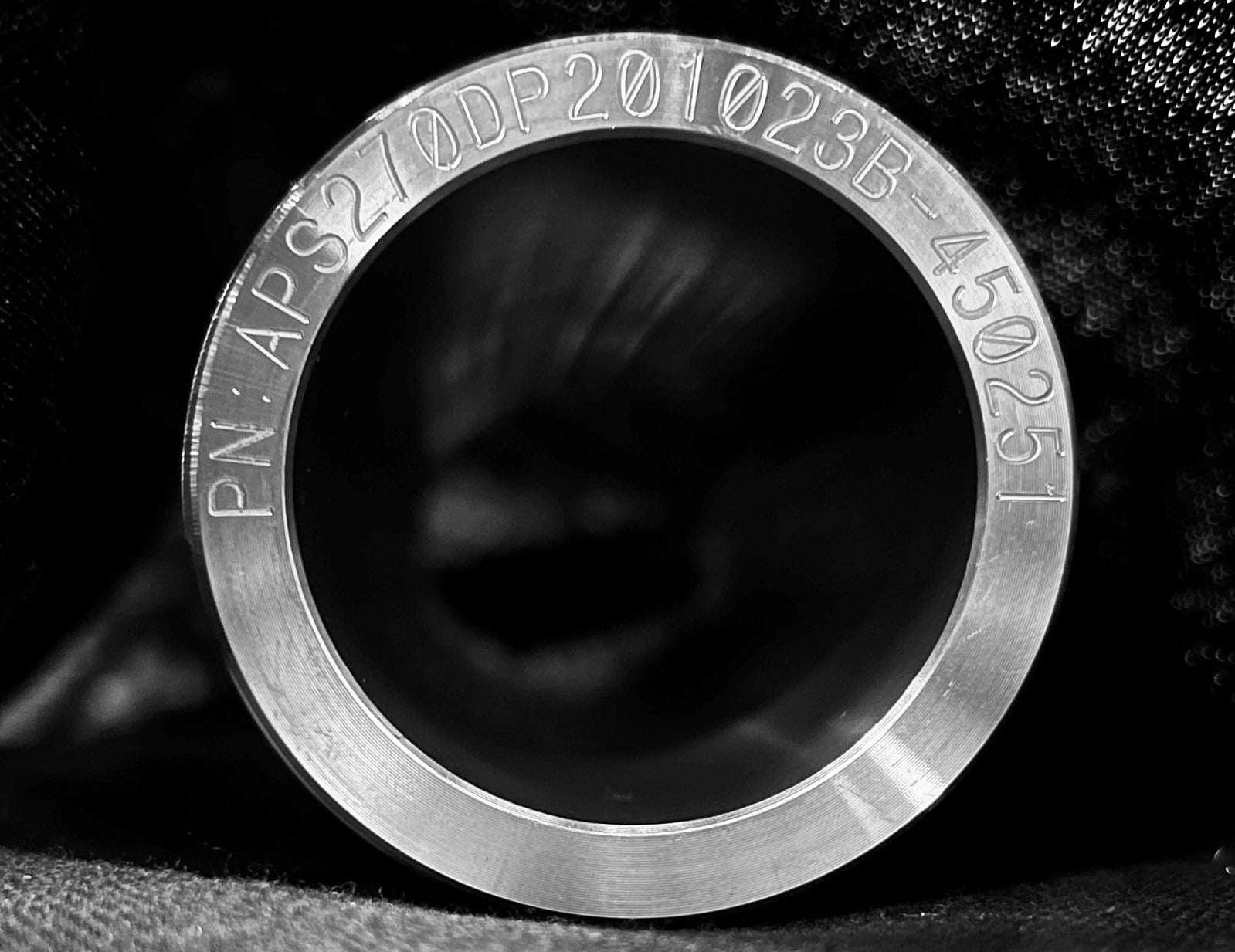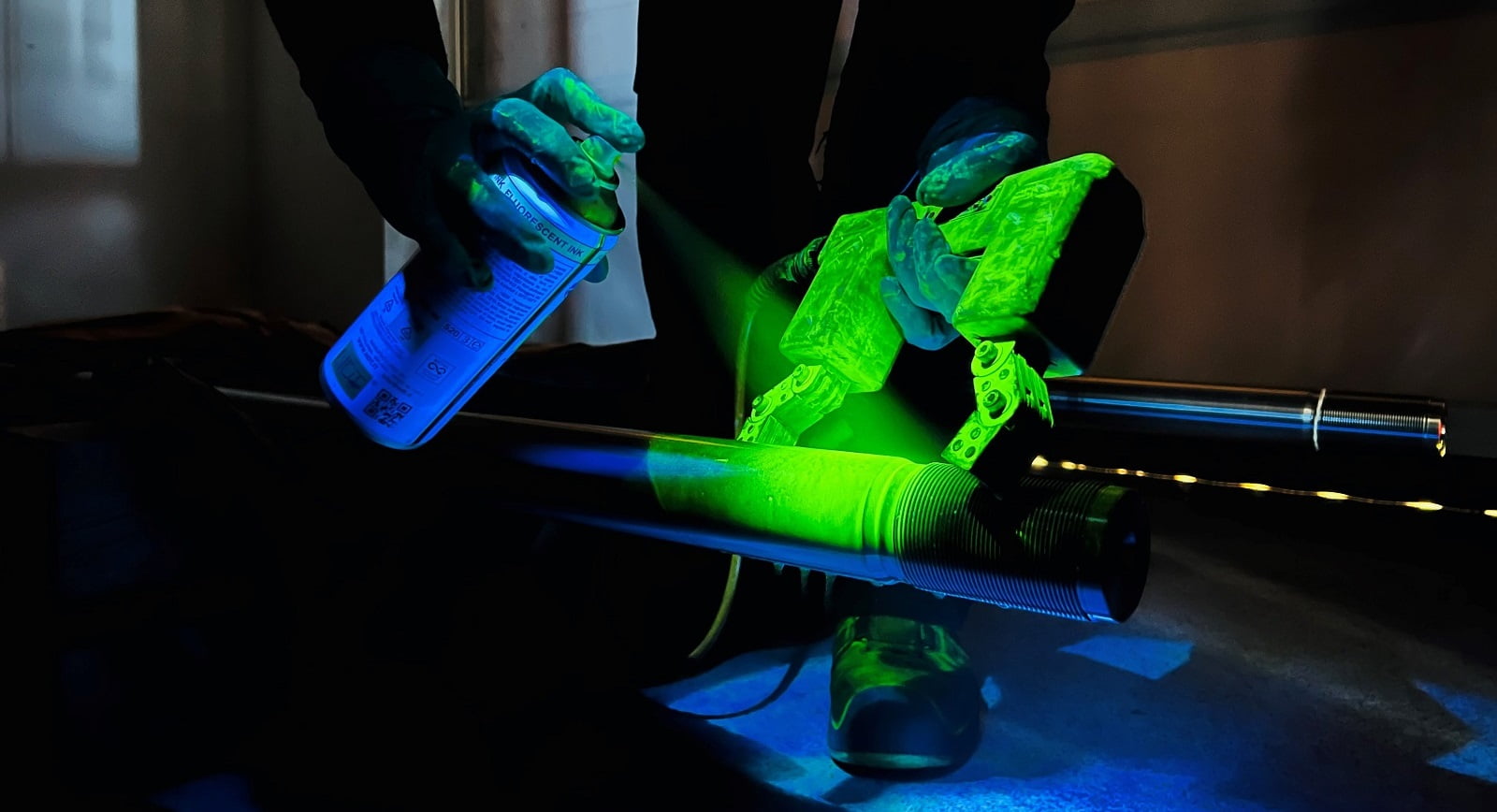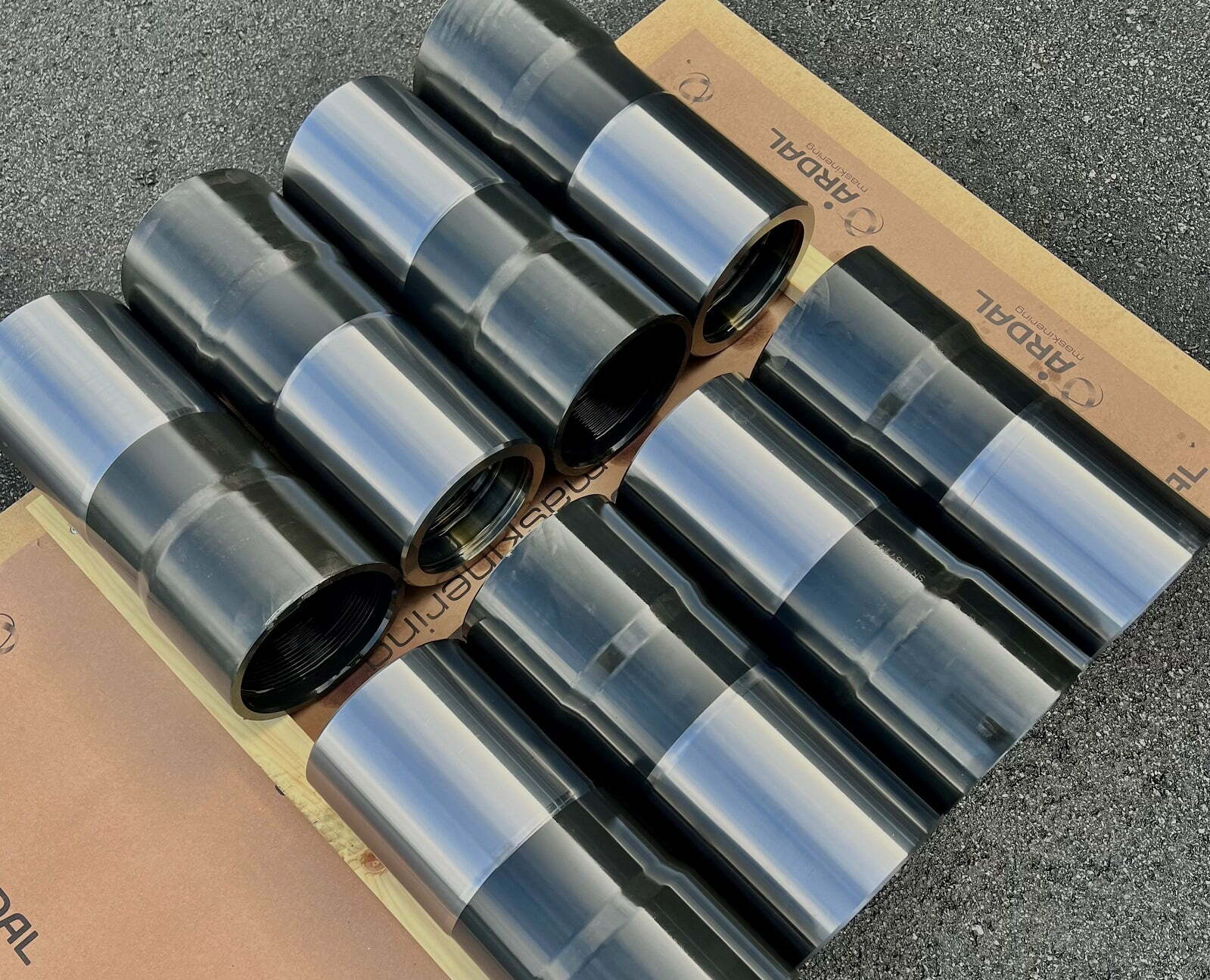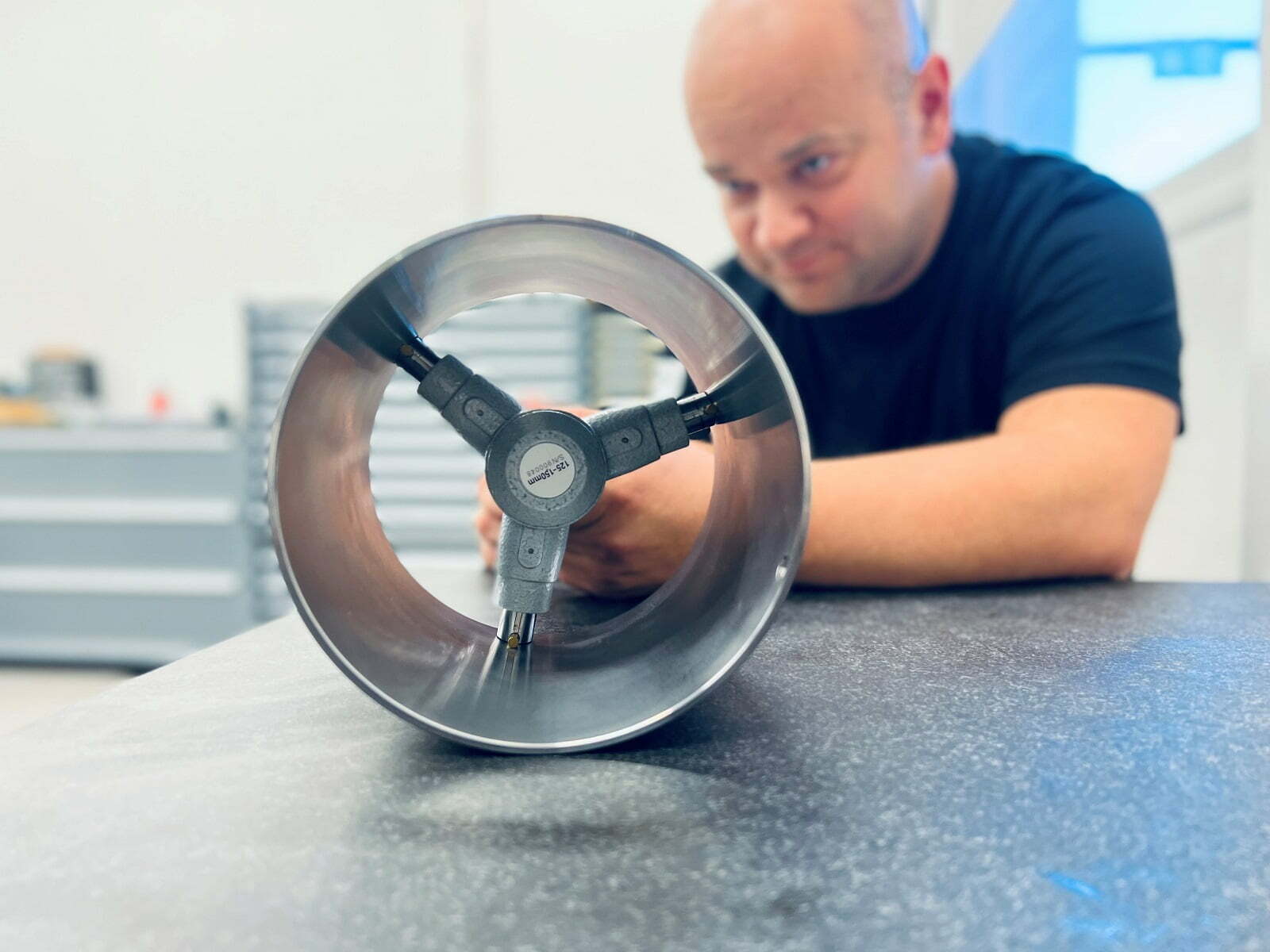Surface treatment and hardening
We deliver several types of surface treatment. Different types of surface treatment can be necessary to improve longevity, reduce friction, increase resilience against external wear, etc. All surface treatment is carried out according to customer requirements and specifications.
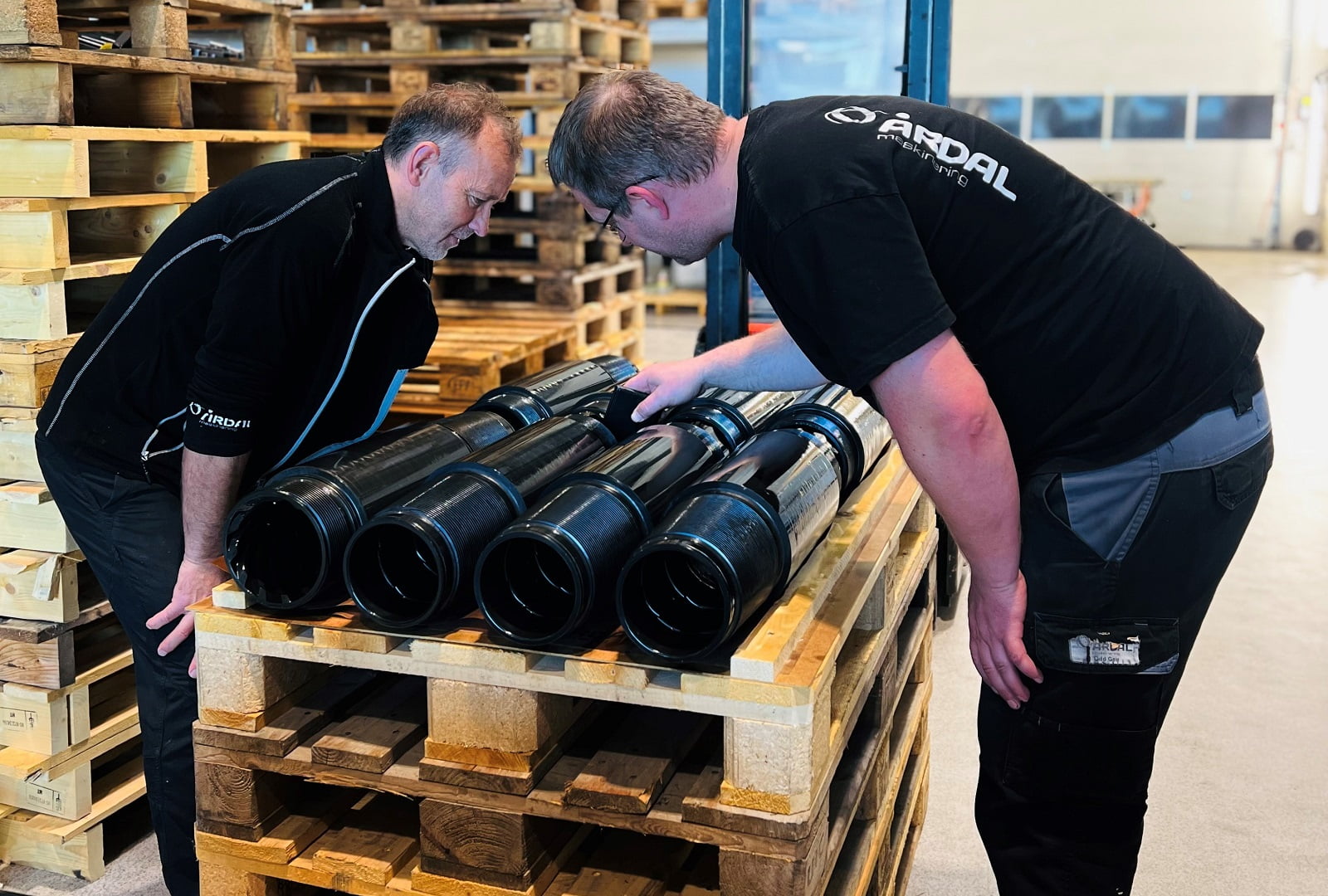
Most surface treatment is subcontracted to external suppliers. These suppliers are carefully selected partners and go through an extensive qualification process (according to API Q1) before approval. Critical suppliers are certified according to ISO 9001:2015.
.
Glass pearl blasting is particularly suitable for products with stringent quality requirements. This technique uses fine glass pearls instead of a rough blast medium. A benefit is that the product surface is not torn up when using this technique. In addition, it does not damage threads and tapped holes. This makes the glass pearl technique suitable for more or less all types of materials.
Glass blasting is a gentler process than sand blasting and also provides a finer surface.
We execute this treatment according to the customer’s own specifications. Glass blasting is mainly carried out internally. Shot peening is carried out externally according to customer specifications.
Phosphate conversion coating is a chemical treatment applied to steel parts that creates a thin, adhesive layer of iron, zinc or manganese phosphates in order to achieve corrosion resistance, lubrication or as basis for subsequent coating or painting. Phosphate conversion coating also works as primer and provides better adhesion for Xylan.
We can supply phosphate conversion coating using both manganese and zinc. All phosphate conversion coating is carried out according to customer specifications. The treatment meets ISO 9717.
Internal phosphate conversion coating:
We perform manganese phosphate conversion coating of smaller parts internally.
External phosphate conversion coating:
Parts to be zinc phosphate coated or needs heat treatment are sent externally to one of our suppliers of surface treatment services. This also applies to large parts and/or large orders.
Xylan contains PTFE (PolyTetraFluoroEthylene) and is a coating with low friction coefficient. Zylan is resistant to most chemical compounds and has very good protection against corrosion.
«It is used for extreme needs for surface protection. There are different color options which also provides good visibility under water. Xylan has the lowest known friction coefficient out of all types of surface treatment. It is stable and efficient in both low and high temperatures. Xylan has lubricating properties and protects well against corrosion, especially when combined with phosphate pre-treatment. The reduced need for maintenance due to the Xylan treatment provides shorter disruptions of service. (not-as.no/)»
The Molykote treatment provides a dry, flame-retardant lubricating film with low friction and high load capacity and prevents such wear and damage to both metal and plastic materials.
These suppliers also offer surface treatments such as:
Everslik, Teflon, glass and sand blasting.
High Velocity Oxygen Fuel (HVOF) coating is a thermic spray coating process used to improve or restore the surface of a component (properties or geometry). This surface-technical technique enables better lifespan for equipment by increasing the erosion resistance and durability as well as corrosion protection.
A fuel (normally paraffin or hydrogen) is mixed with oxygen and lit in the combustion chamber. The combustion gases are accelerated through a nozzle. Powder is introduced into the gas stream where it softens and the speed increases, before it is applied to the sprayed surface. This type of coating is often used as a replacement process for hard chrome and produces a very tight, durable coating.
The benefits of HVOF spraying compared to other thermic spraying processes are primarily connected to improved coating.
HVOF can be used as coating for both OD and ID. Our supplier uses, among other things, a robot for coating complex geometries and internal coating. Precision grinding can be carried out after the treatment.
Pulse plasma hardening is a process where nitrogen is “shot” into the surface of the substrate and transforms it to nitrides. On the outside of the substrate a coating/composite layer is formed consisting of intermetallic iron nitride. This is very hard and resistant to wear and corrosion.
All properties (mechanical and thermic) of the core material are maintained. Changes are only happening on the surface.
We offer several types of hardening togheter with third party companies:
Case hardening or surface hardening
This is the process of hardening the surface of a metal object while the metal below the surface remains soft, creating a thin layer of harder metal on the surface. For iron or steel with low carbon content, which has bad or no inherent curability, the hardening process involves adding more carbon or nitrogen into the surface layer. Case hardening is normally done after the part has been formed to its final form.
Case hardening can prevent a component from cracking (due to the soft core that can absorb tension without cracking), but also provides sufficient durability for the hardened surface.
Induction hardening
Induction hardening is a type of surface hardening where a metal part is induction heated and then quenched. The quenched metal goes through a martensitic transformation, which increases the hardness and brittleness of the part. Induction hardening us used to selectively harden areas on a part or an assembly without impacting the properties of the part as a whole.
Ammonia gas nitriding / gas nitriding
During gas nitriding, nitrogen is added to the surface of steel components. This process forms a network of nitrides that provides a hard wear layer and increases the corrosion-resistant properties of the components significantly. The process can be carried out on fully machined parts with strict requirements for surface and dimensions. Gas nitriding is carried out at a low temperature that does not impact the strength of the core material.
Quenching and tempering / hardening
Hardening is the process of heating steel with subsequent quenching, causing a martensitic transformation creating a brittle and hard material. After this, subsequent tempering is carried out to provide ductile and strong components.
Aging / particle hardening
This process is carried out on higher alloys such as 17-4 PH, Inconel 718, Uddeholm Corrax etc. After heat treatment, the material is «reset» before subsequent heating causes precipitation of particles and hardening.
Stress relief annealing
Stress relief annealing is carried out on rough machined parts to remove and/or equalize stress in the material. This reduces the possibility of deformation after fine machining and reduces the possibility of crack formation during the use of welded components.
.

